On the Surface — Crystals. In Reality — Catastrophe
Sabu-sabu, a cheap and highly addictive form of crystal methamphetamine, is infiltrating every layer of life in Bali. It slips quietly into daily routines — from delivery drivers trying to stay awake, to beach vendors, students, mothers, and even white-collar professionals. What was once seen as a party drug is now a coping mechanism, a habit, and, for many, a trap.
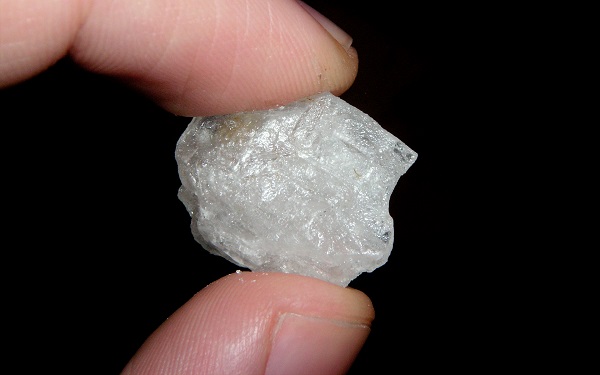
Indonesia’s anti-drug laws are among the harshest in the world, yet meth continues to spread — quietly, efficiently, and dangerously. And nowhere is this more visible, or more quietly accepted, than on the island of Bali.
But meth’s impact can’t be measured by headlines or statistics alone. Behind the numbers are real people — workers, artists, tourists — whose lives have been quietly reshaped by sabu.
The People Behind the High
- “Almost everyone here smokes sabu. It keeps us going.” — Skribo, a local vendor on Gili Trawangan (Stories from the Scenic Route)
Meth addiction in Indonesia doesn’t always start with a party — it often begins with pressure. For many, sabu isn’t about getting high. It’s about getting through the day.
Gig Workers, Vendors, and Tourists
Tito, a 21-year-old delivery driver in Jakarta, began using sabu to stay awake through exhausting shifts. “I needed to be available at all times,” he said. After two years of use, he was arrested with 0.4 grams and sentenced to two years in prison. His request for rehabilitation was denied.
Skribo, a vendor on Gili Trawangan, openly admitted that meth is widespread in the tourist industry. “Almost everyone here smokes sabu,” he said. “It keeps us going.” Long hours catering to tourists create an environment where stimulant use becomes routine.
Troy Smith, an Australian tourist, was arrested in Bali after receiving a package containing meth. Although he was ultimately sentenced to six months in rehabilitation, his case shows how foreigners are also caught in the web of Indonesia’s strict drug laws.
Public Figures and Professionals
Roy Marten, a well-known Indonesian actor, was arrested twice for meth possession, including once while promoting an anti-drug campaign. His case shattered the illusion that addiction is limited to the poor or uneducated. Meth use cuts across fame, wealth, and status.
In the aviation industry, cases of Indonesian pilots using meth to stay awake during long-haul or early-morning flights have raised serious safety concerns. In 2012, a Lion Air pilot was arrested just before takeoff with meth in his possession. The National Narcotics Agency (BNN) later reported that some pilots considered meth part of their lifestyle.
In entertainment, professionals like choreographers and performers have also turned to sabu to cope with intense work demands. One 43-year-old from Jakarta described how meth helped him juggle early shoots and afternoon teaching until dependency took over.
A Changing User Profile
- “Methamphetamine is now the primary drug threat in Indonesia, especially among young adults and workers.” — UNODC Indonesia ATS Report, 2013
Today’s meth user is more likely to be:
- Aged 20–29 (over 50% of all users)
- Educated: 75% have completed high school; 70% are university students
- Employed: Many are drivers, students, factory workers, or professionals
Meth use among women is also rising sharply, particularly in eastern provinces such as Papua and Maluku.
What This Tells Us
These
stories reflect a troubling reality: methamphetamine use in Indonesia
is not limited to so-called “at-risk” groups. From gig workers and
street vendors to artists and airline staff, sabu has infiltrated all
levels of society — not as a recreational drug, but as a coping
mechanism.
What Meth Is — and Where It’s Coming From
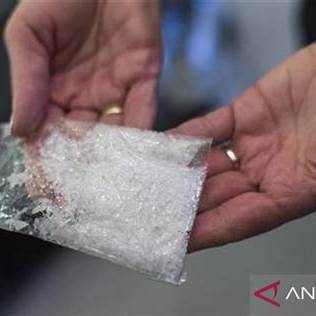
Methamphetamine — locally known as sabu — is a synthetic stimulant that hijacks the brain’s reward system.
Chemically, it’s made from a toxic cocktail of everyday ingredients: cold medicine (pseudoephedrine), drain cleaner, battery acid, and flammable solvents like ether.
Structurally similar to dopamine — the brain’s “pleasure” chemical — meth floods the nervous system with an intense rush of euphoria and energy.
But the high comes at a devastating price: rapid addiction, paranoia, psychosis, irreversible brain damage, and in many cases, death. It's not just a street drug — it's a chemical weapon with a deceptively simple recipe and global reach.
And Indonesia is not alone in facing its consequences.
In Australia, which has the highest per capita meth use in the world, over 10,000 people were hospitalized for meth-related issues in a single year. In the United States, meth is a major contributor to overdose deaths, often in combination with fentanyl. In Europe, while overall usage is lower, countries like Czechia and Slovakia report high rates, and smuggling routes from Mexico are drawing increasing concern.
But Southeast Asia remains the epicenter of production — and Indonesia is directly in its path.
The region known as the Golden Triangle, where Myanmar, Laos, and Thailand meet, has become the world’s largest methamphetamine production zone. Civil conflict in Myanmar has enabled armed groups to operate massive “super-labs,” churning out industrial quantities of meth that are trafficked across borders by sea and land. Much of it ends up in Indonesia’s cities, nightlife scenes, and even small island communities.
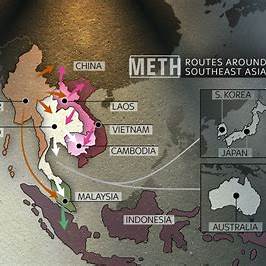
- “The production and trafficking of methamphetamine in Southeast Asia have reached record levels, fueled by organized crime groups exploiting political instability in Myanmar.” — Jeremy Douglas, UNODC Regional Representative for Southeast Asia and the Pacific (The Guardian, 2023)
While the flow of meth is global, Indonesia’s vulnerability is uniquely local — shaped by its geography, economic inequality, tourism reliance, and a growing youth population. What’s entering the country through international smuggling routes is colliding with internal pressures and turning sabu into a nationwide epidemic.
The Damage Meth Leaves Behind
- “Long-term methamphetamine use is associated with memory loss, impaired cognitive function, and severe psychiatric disorders including psychosis.” — National Institute on Drug Abuse (NIDA)
The damage meth causes doesn’t end with the high — it lingers in the mind, body, family, and even the soil.
In the short term, meth creates a rush of euphoria, alertness, and energy. But it also brings paranoia, anxiety, and serious cardiovascular strain.
With long-term use, the consequences escalate: memory loss, hallucinations, violent psychosis, and brain damage. Users often suffer from “meth mouth” — severe tooth decay — and skin sores from compulsive picking. Heart disease, depression, and suicide risk are all elevated.
At Indonesia’s National Rehabilitation Center in Bogor, nearly 42% of meth users were admitted with psychiatric symptoms, including depression, anxiety, and hallucinations. These effects are compounded for women in vulnerable settings. Among sex workers, meth use is often encouraged by clients to heighten sexual activity — a practice that increases HIV transmission and diminishes safe-sex negotiation.
The toll spreads beyond the user. Families are broken. Young mothers lose custody of their children. Functional users — teachers, drivers, students — slowly unravel into cycles of addiction and isolation.
But meth’s footprint doesn’t stop with people.
- “A single meth lab can generate up to six pounds of toxic waste for every pound of meth produced, leading to serious soil and water contamination.” — Oregon Department of Environmental Quality (DEQ)
In Oregon, USA, entire neighborhoods had to be excavated after contamination from meth labs poisoned the ground. One super-lab producing 120 pounds of meth left behind more than 700 pounds of hazardous waste.
Indonesia, still in the early stages of domestic meth production, faces a critical juncture. As small-scale labs begin to emerge — particularly in tourist zones — the country risks replicating the environmental disasters seen elsewhere unless strict cleanup protocols and regulations are enforced.
Meth leaves behind more than ruined lives. It scars entire landscapes.
How to Spot Someone Using Methamphetamine
Identifying methamphetamine use early can be critical for helping someone get treatment before addiction worsens. While symptoms can vary depending on how much and how long someone has been using, there are several common physical, behavioral, and psychological signs:
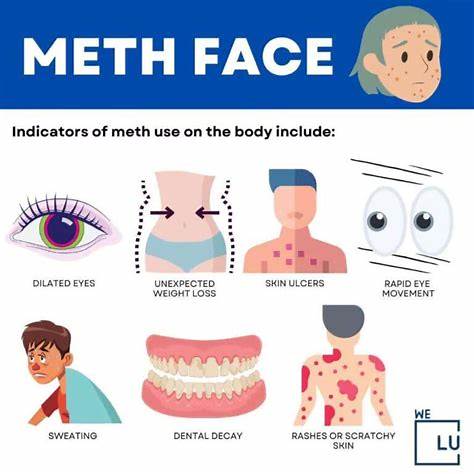
Physical Signs
- Sudden weight loss: Rapid, unhealthy weight loss due to loss of appetite.
- Severe dental problems ("meth mouth"): Broken, blackened, or rotting teeth.
- Skin sores and scabs: Users often pick at imaginary bugs under their skin, causing open wounds.
- Dilated pupils and rapid eye movement: Eyes may look unusually wide or unfocused.
- Excessive sweating and body odor: Due to hyperactivity and dehydration.
- Twitching, jerky movements: Constant fidgeting, scratching, or repetitive actions.
Behavioral Signs
- Hyperactivity and restlessness: Inability to sit still; talking very rapidly.
- Aggressive or violent behavior: Sudden mood swings, anger, or paranoia.
- Obsessive actions: Repetitive tasks like disassembling objects or obsessive cleaning.
- Erratic sleeping patterns: Staying awake for days (known as "tweaking") followed by crashes.
- Neglect of personal hygiene: Appearance becomes messy, dirty, or unkempt.
Psychological Signs
- Extreme paranoia: Believing they are being watched, followed, or spied upon.
- Hallucinations: Seeing or hearing things that aren't there.
- Confusion and memory loss: Difficulty focusing or recalling basic information.
- Delusions of grandeur: Unrealistic beliefs in their power, intelligence, or abilities.
Special Note on "Tweaking"
One of the most dangerous phases of methamphetamine use is called "tweaking" — when the drug's euphoric effects wear off after prolonged use. During this phase, the user may be highly paranoid, aggressive, sleep-deprived, and hallucinating. This is when they are at highest risk of harming themselves or others.
If you suspect someone you know is using meth, approach the situation with compassion, not confrontation.
Methamphetamine use often stems from deep emotional pain, stress, or overwhelming pressure. Offer support by encouraging them to seek professional help and, if necessary, involve trained counselors or health workers. Judgment and anger can drive users further into isolation — understanding and early intervention can save lives.
Fighting Meth: From Handcuffs to Help
Indonesia’s anti-drug laws are among the toughest in the world. Possession of methamphetamine (sabu) can result in up to four years in prison, while trafficking carries the death penalty. The goal is deterrence — but in reality, this approach often targets users more than dealers, and leaves little room for recovery.
In theory, some minor offenders may be offered rehabilitation instead of jail time. But in practice, access to treatment is limited, inconsistent, and often unaffordable. The fear of stigma — particularly for women — drives many users into silence. For them, judgment from family and community can feel more terrifying than the law.
Still, there are signs of progress. Programs like Karisma in Jakarta offer safer smoking kits, counseling, and mental health support to meth users — no questions asked. It’s a small but meaningful shift toward treating addiction as a public health issue, not a moral failing.
The path forward is complex but not impossible.
What Experts Recommend
- Prevention: Launch public education campaigns targeting youth before addiction begins.
- Rehabilitation: Fund and expand access to quality rehab centers with long-term aftercare.
- Law enforcement: Focus on dismantling major trafficking networks, not punishing low-level users.
- International cooperation: Partner with neighboring countries to disrupt the meth trade at its source.
- Cultural change: Shift how society views drug use — from criminal behavior to treatable illness.
Ultimately, real change will require compassion, not just enforcement. A society that punishes without offering help ensures that addiction thrives in the shadows.
What to Do If You’re Affected or Concerned
Whether you’re struggling with sabu use or worried about someone else, help exists — and you don’t have to face it alone.
📞 Reach Out to a Local Support Organization:
- BNNP Bali (National Narcotics Agency – Bali) 📞 +62 361 844 6871 🌐 www.bnn.go.id - Anonymous reporting and rehab assistance.
- Yakeba Foundation (Yayasan Kesehatan Bali) 📞 +62 361 735 378 🌐 www.yakeba.org - Trusted local NGO offering rehab and outreach for substance users.
- Rumah Berdaya (Denpasar) 🌐 on Google Maps - A mental health support center that also works with those facing substance-related issues.
💬 How to Help Someone — Discreetly and Safely:
- Don’t confront aggressively. Listen calmly and without judgment.
- Suggest professional help or contact a support center together.
- If the person is involved in trafficking or in immediate danger, don’t intervene alone — contact professionals or NGOs trained to help.
A Crisis That Demands More Than Just Prison Bars
- “If unchecked, the methamphetamine crisis will cost countries not only in public health burdens but in lost futures, fractured communities, and weakened economies.” — World Health Organization (WHO), Hidden Epidemics Report
The meth crisis is not just a criminal justice problem. It is a slow-burning humanitarian, public health, and environmental disaster. And it cannot be solved with prison bars alone.
As meth continues to penetrate homes, workplaces, and entire communities, the cost is not just measured in court cases or arrests — but in broken families, untreated illness, contaminated land, and young lives slipping quietly out of reach.
Real solutions require more than enforcement. They require compassion, sustained support, and the political will to treat addiction as a public health challenge, not a moral failing.
The alternative? A generation lost to sabu — and a nation burdened by consequences far deeper than it ever anticipated.
References:
- United Nations Office on Drugs and Crime (UNODC) Reports
- Kompas.id, Brainwave Science 2024 Reports
- Reuters: Myanmar trafficking and Golden Triangle drug trade
- National Institute on Drug Abuse (NIDA)
- Substance Abuse and Mental Health Services Administration (SAMHSA)
- American Addiction Centers
- Oregon Department of Environmental Quality Reports
- Statesman Journal (Oregon meth contamination case)
- Bio-One Poway: Meth Lab Cleanup Hazards
- Universitas Indonesia research on psychiatric symptoms
- Stories from the Scenic Route: Interview with Gili Trawangan vendor
- Reprieve UK: Case study on Tito
- Wikipedia: Roy Marten biography
- News.com.au: Case of Troy Smith in Bali
- Harm Reduction Journal (BioMed Central): Karisma Outreach Program Jakarta
- European Drug Report (EUDA): Meth trends in Europe
- BILD.de: Australia meth epidemic statistics



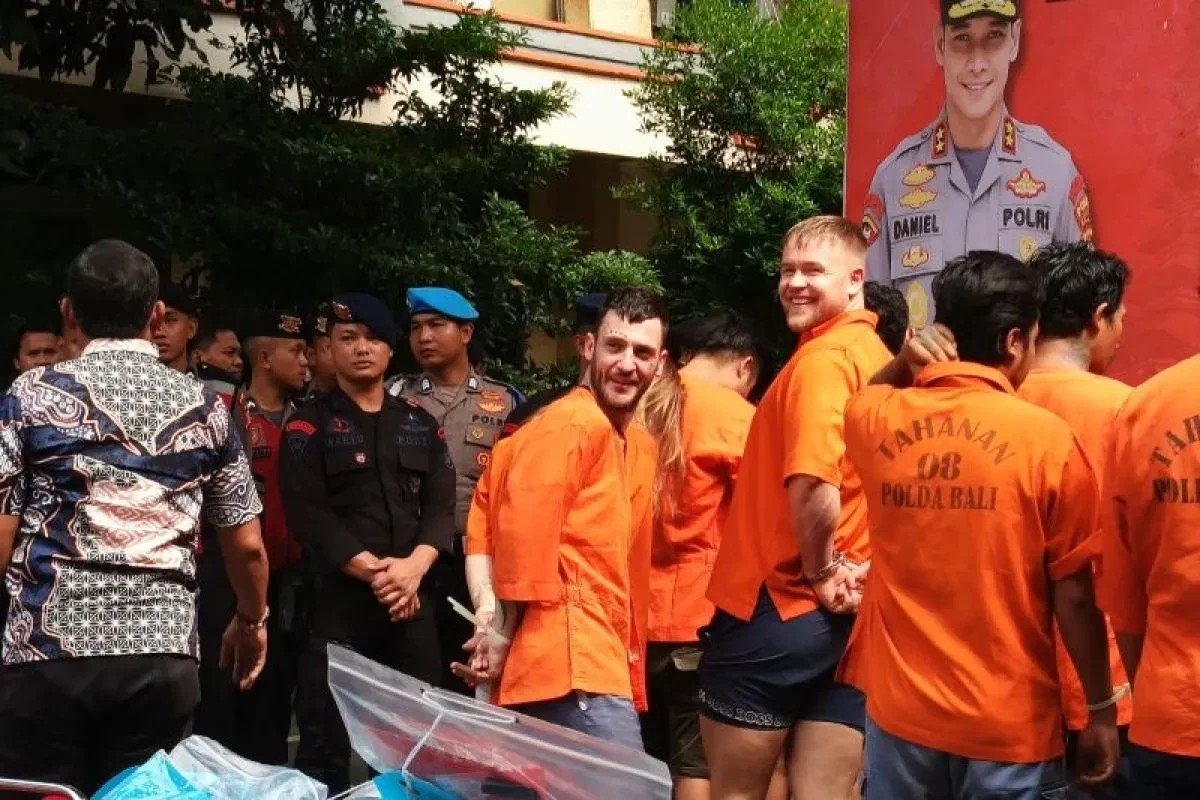

You can add one right now!